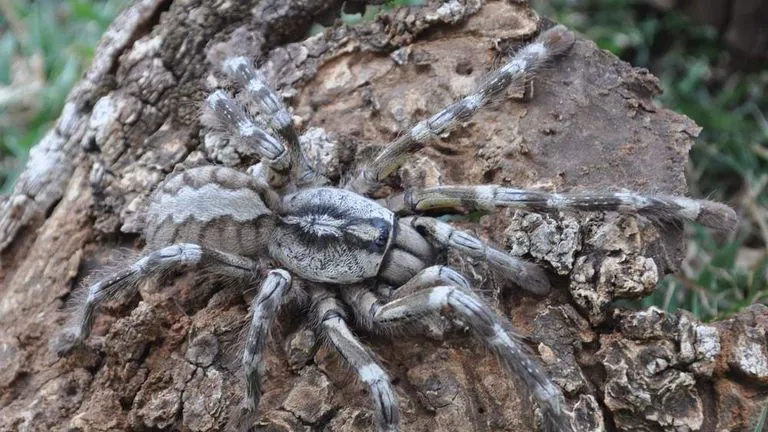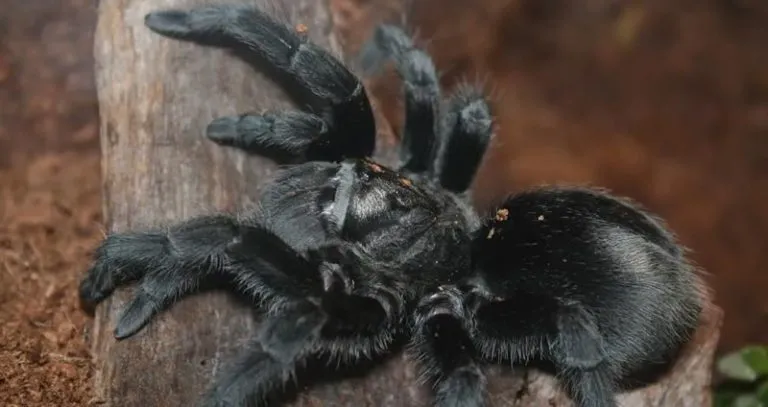Understanding Tarantula Lifespans
Tarantulas, fascinating arachnids known for their impressive size and diverse appearances, captivate many as pets and subjects of scientific study. Their lifespans, however, differ significantly from those of humans. Unlike the human lifespan, which typically spans several decades, tarantulas have varied life expectancies dependent on a multitude of factors, including species, sex, and environmental conditions. Understanding these lifespans is essential for anyone interested in keeping a tarantula, or simply curious about these creatures. The concept of converting tarantula years to human years isn’t a direct calculation, but rather an estimation to help us understand the relative aging process. This article dives into the details of tarantula lifespans, explaining how to get a grasp on their age relative to human years.
Factors Influencing Tarantula Lifespan
Several factors influence how long a tarantula lives. The most significant is the species; some tarantula species live for only a few years, while others can live for over two decades. The sex of the tarantula also plays a vital role. Generally, female tarantulas live much longer than males. Females often live between 15 to 30 years, while males typically survive only a few years after reaching maturity. Additionally, environmental conditions and care practices influence their lifespan. Proper diet, adequate temperature and humidity, and a stress-free environment contribute significantly to a tarantula’s longevity. Handling, and stress can also have an effect. Providing these creatures with the correct habitat can greatly improve their health.
Tarantula Species and Their Lifespans

Different tarantula species exhibit significant variations in their lifespans. For example, the Chilean rose hair tarantula (Grammostola rosea), a popular pet, can live for 15 to 20 years for females and 5 to 10 years for males. The Goliath birdeater (Theraphosa blondi), one of the largest tarantula species, can have females living for 25 years or more. In contrast, some species, such as certain dwarf tarantulas, have considerably shorter lifespans, often only a few years. Researching the specific species of your tarantula is important to get a better understanding of their life expectancy. Knowing the expected lifespan helps in planning care and monitoring their health effectively. This variability emphasizes the need to consider species-specific care requirements.
How to Estimate Human Years for Your Tarantula
Converting tarantula years to human years is not as straightforward as multiplying by a fixed factor, like we may do for dog years. However, we can make some estimates. We can use generalized approximations by using different calculations depending on the species and their life stages. For example, a mature female tarantula might be considered middle-aged after 8-10 years, or younger when considering male tarantulas, which mature faster. Approximating requires assessing factors like the tarantula’s maturity, species, and overall health. Remember, these are rough estimates, and the true age of a tarantula cannot be directly translated into human years. Instead, it offers a frame of reference.
Step-by-Step Calculation Guide
Creating an exact calculation is not possible, but here are some general steps for an estimation. First, determine the tarantula’s species to establish its average lifespan. Then, ascertain its current age. If you know when it molted for the last time, you can approximately know its age. Use the average lifespan of the species as a reference point, understanding that females live longer than males. Note that younger tarantulas develop faster and have a higher ‘aging’ rate. You can roughly estimate the equivalent of human years by comparing the tarantula’s stage of life relative to the average lifespan. Always prioritize your tarantula’s well-being and health, and consult with a veterinarian specializing in exotic pets for more accurate health assessments.
Challenges in Age Conversion

Several challenges complicate the conversion of tarantula years to human years. One major challenge is the significant lifespan variation across species. Another challenge is the lack of standardized methods for aging tarantulas, especially in younger stages. Moreover, environmental factors and individual health differences further affect the aging process. These factors make it difficult to create a universal conversion formula. Without specific knowledge, it is nearly impossible to create an exact translation. Therefore, any estimates should be considered a general guideline.
Importance of Proper Care for Longevity
Providing optimal care is crucial for maximizing a tarantula’s lifespan. This includes creating an appropriate habitat with the right temperature, humidity, and substrate. Feeding your tarantula a balanced diet of insects and other appropriate food items also significantly contributes to their health. Regular monitoring for signs of illness or stress can help catch potential health issues early, allowing for timely intervention. Avoiding unnecessary handling and providing a stable, low-stress environment are also key to promoting a long and healthy life. Thoughtful and informed care will allow you to enjoy your pet for the longest possible time.
Impact of Diet and Habitat
The diet and habitat of a tarantula significantly impact its lifespan. A well-balanced diet, including appropriately sized insects, provides the necessary nutrients for growth and maintenance. Overfeeding can lead to health problems. Likewise, the habitat plays a vital role. A proper habitat should mimic the tarantula’s natural environment, providing suitable temperature, humidity, and substrate for burrowing or climbing. Poor habitat conditions, such as inadequate ventilation or improper temperature control, can stress the tarantula. Stress can shorten its lifespan, while optimal conditions will help ensure it lives for as long as it can.
Signs of Aging in Tarantulas

Recognizing the signs of aging in tarantulas is crucial for providing appropriate care during their later years. Some common signs include slower movement, reduced appetite, and changes in molting frequency. The tarantula may show a decrease in activity and spend more time hiding. It may become less responsive to stimuli. Examining these signs can help you adjust care practices to support the tarantula. Consulting with a veterinarian specializing in exotic pets can help you assess whether changes are age-related or a symptom of other health problems. If you notice any changes in behavior, ensure your pet receives the care it needs.
Common Health Issues and Lifespan
Several health issues can affect a tarantula’s lifespan. Parasitic infections, fungal infections, and injuries can significantly shorten a tarantula’s life. Poor nutrition, inadequate housing, and stress from handling can weaken the immune system, making the tarantula more susceptible to illness. Regularly monitoring your tarantula’s health, looking for signs of illness such as lethargy, loss of appetite, or unusual behaviors, can help catch health problems early. It is important to consult with a veterinarian specializing in exotic pets to properly diagnose and treat any health problems that arise.
Conclusion
While converting tarantula years to human years isn’t a precise science, understanding their lifespans offers valuable insight into their care. By considering factors like species, sex, and environmental conditions, pet owners can better appreciate their tarantula’s life stages and provide tailored care. Emphasizing proper diet, appropriate habitat, and regular health checks helps to maximize a tarantula’s lifespan, allowing owners to enjoy their pet for many years. Keeping a tarantula means providing the best possible care, recognizing their unique needs, and appreciating the beauty of these fascinating creatures.
